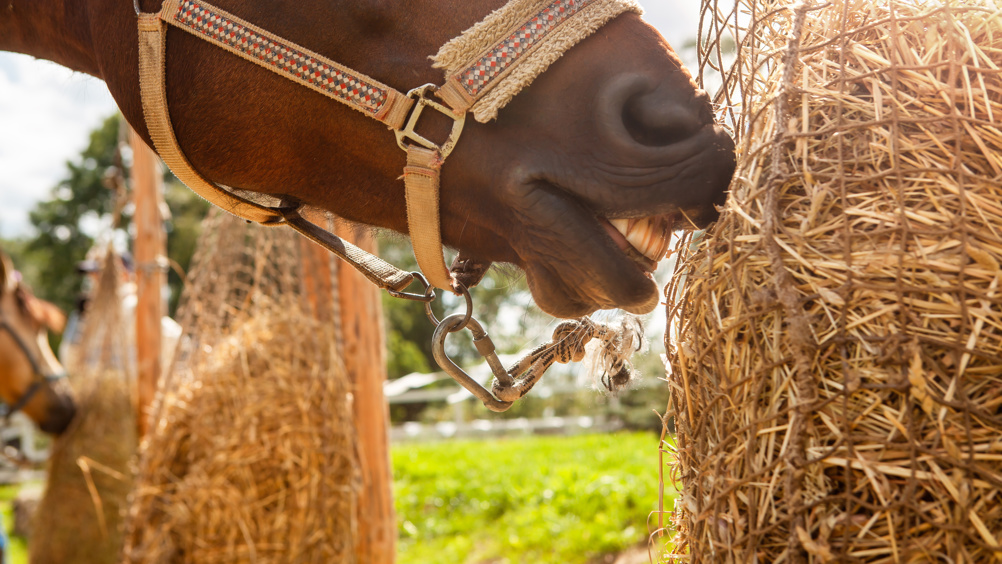References
The horse's behavioural and welfare needs for optimal foraging opportunities

Abstract
Horses are herbivores and are designed to eat a diet high in fibre and low in starch, obtained through freedom of movement to select and forage from a diverse range of plants in the company of other horses. Forage fed to domesticated horses is often provided in various devices designed to replicate more natural feeding patterns, but can result in frustration behaviours even though horses are adept at learning to manipulate such devices to surmount feeding challenges. Because domesticated horses are often required to perform in a range of spheres, which in turn requires higher energy output, many horses have their fibre rations restricted in favour of feeding high-starch substrates. This can lead to significant changes in the microbial environment of the gut, which compromises gastrointestinal health and can cause a range of undesirable behaviours. Diet-related disorders such as gastric ulcers are commonly seen when restricting forage rations and/or overfeeding starch in the horse, and behavioural consequences include frustration-related behaviours, aggression and oral and locomotory stereotypies, all of which compromise the horse's welfare. Meeting the behavioural needs of the horse by giving them agency to access the 3 Fs – friends, forage and freedom – is inextricably linked with their natural feeding behaviour. It is fundamental to ensure that horses are provided with the opportunity for positive feeding experiences to improve both physical and mental welfare.
All horses have a range of behavioural needs that must be met for adequate homeostasis, both for physiological and mental wellbeing. The Five Domains model (Mellor et al, 2020) acknowledges the wealth of research available to discuss the impact of behavioural interactions and nutritional conditions on animal welfare. It recognises both positive and negative emotional states with regards to whether caretakers meet the animal's needs through the minimum standard of care, or proactively seek to enhance welfare by making small changes to their management. The 3 Fs – access to friends, forage and freedom, originally discussed by Fraser (2012a; 2012b; 2012c) – are now a popular term that focuses on three of the top behavioural priorities of horses. These are reiterated within the Five Domains model (Mellor et al, 2020), in that horses need to have opportunities for adequate nutrition, as well as positive experiences in the ability to chew for prolonged periods of time and gastrointestinal comfort (Mellor et al, 2020). All too often, forage rations are limited, and horses may experience a range of gastrointestinal issues as a result (Hesta and Costa, 2021). Having agency over free movement to explore their environment and engage in social behaviour with conspecifics, such as socially facilitated periods of foraging (Mellor et al, 2020), are key aspects of ensuring that the 3 Fs are provided for. This article discusses the impact of modern feeding practices on the behaviour and welfare of horses.
Register now to continue reading
Thank you for visiting UK-VET Equine and reading some of our peer-reviewed content for veterinary professionals. To continue reading this article, please register today.

